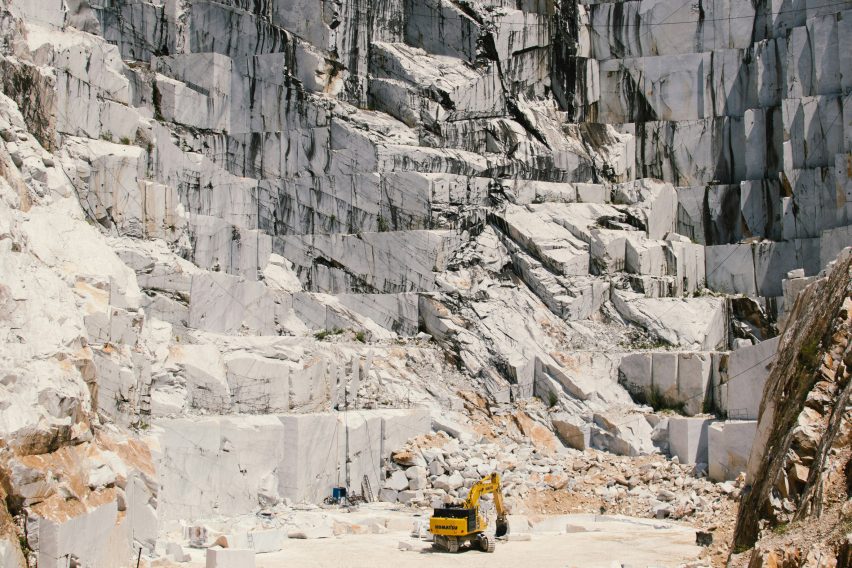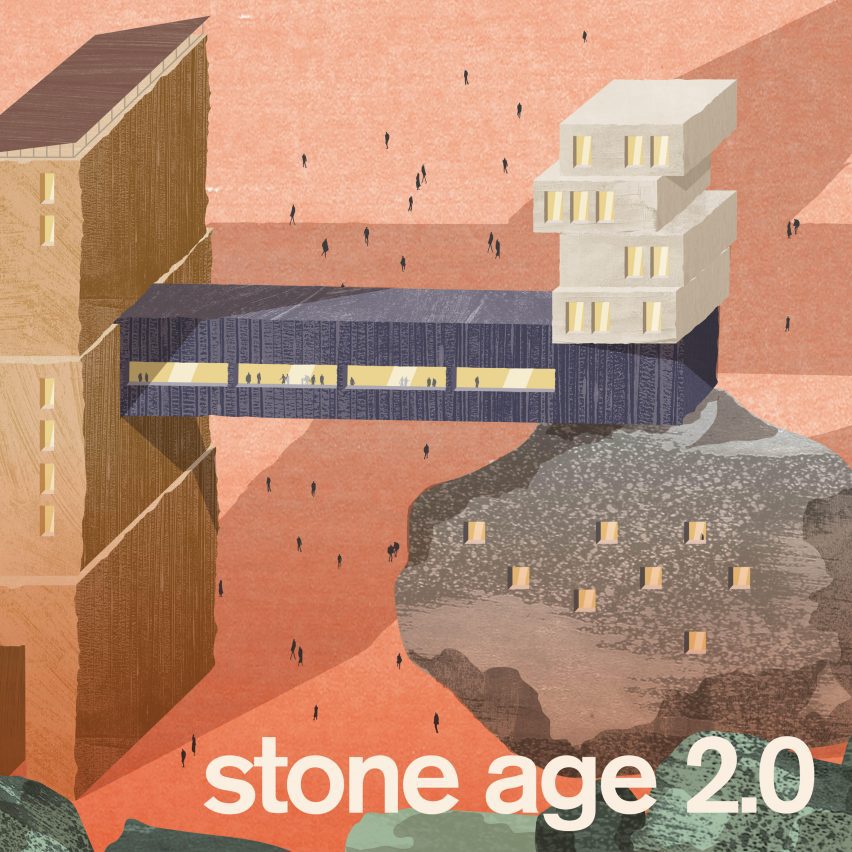
"I would caution against claims of stone being a revolutionary sustainable material" says Natalia Petkova
The sustainability of structural stone is dependent on how and where it is quarried and its reputation as an infinite material is misleading, warns Slovak-British architect Natalia Petkova in this Stone Age 2.0 interview.
"I would caution against claims of stone being a revolutionary sustainable material – we miss the opportunity to think critically when we reduce materials to 'good' and 'bad' ones," she told Dezeen.
"The virtue of solid stone construction is case-specific and depends on where the stone comes from and how it is employed."
Petkova is an architect and researcher who recently completed a PhD thesis exploring the structural use of stone in projects under construction in Spain, Switzerland and the UK, which is awaiting publication.
Dezeen spoke to her as part of its Stone Age 2.0 series, which is investigating the potential of the material as a viable, low-carbon, modern structural material.
Transportation of stone can offset carbon benefits
Petkova cautioned against claims that stone is a "limitless material" that can readily be extracted from the Earth's crust and transported to construction sites. Instead, she believes accessibility to stone at a given site should be considered before using it.
"In an absolute sense, that's true, but in reality, there are many limitations to its actual access," said Petkova.
"Sometimes the appropriate stone is not locally available with respect to a given construction site."

One of the main reasons stone is considered a sustainable building option is because it is a natural material that requires minimal processing from being extracted from the ground to being used in construction, minimising its carbon footprint.
However, Petkova claimed that any carbon cost benefit achieved by using stone might be lost if it is transported from a quarry by truck further than 200 kilometres, referencing a thesis by sustainability expert Dimitra Ioannidou.
"We will see a lot more buildings being made from solid stone"
She added that the number of new quarries that could be opened to make stone accessible to more construction sites is limited, for reasons such as potential impact on local communities.
"Recent research carried out at ETH Zurich suggests that if stone is transported by truck beyond 200 kilometres, it might no longer make sense to employ it structurally in terms of carbon reduction," Petkova explained.
"There are also political and anthropogenic limitations with people not wanting to have new quarries popping up in residential areas. These attitudes can of course evolve but it’s not a given."
For stone to become a leading structural material, Petkova believes architects and engineers need to learn to look beyond what is "convenient".
Yet, even with a full embrace of stone in the architecture industry, she is doubtful it can overtake go-to materials such as concrete, steel and timber in popularity.
"I do think we will see a lot more buildings being made from solid stone, but I don't think it's anywhere near replacing concrete or steel construction, or even timber," said Petkova.
"Its success will depend on the capacity of diverse actors involved in the production of the built environment to really question their professional habits and to adapt these to stone."
"Stone arguably imposes itself on design more than other materials"
While mass-produced materials come in predictable, standardised formats, the nature of stone is that there is variation in what is extracted. Because of this, Petkova said stone cannot follow a designed form like other materials can – the form of a building has to be designed to suit the stone provided.
"If it's subjected to the logic of industrial or synthetic materials like concrete, stone will always be less convenient and risk being replaced," she explained.
"Stone arguably imposes itself on design more than other, notably synthetic, materials do," she continued.
"The idea of form following a given material challenges modernist approaches to building, which consisted of materials following form at all costs, be that financial or environmental."
According to Petkova, dependence on uniform, highly processed building materials in the industry today is leading to a large amount of stone being wasted. In many quarries a stone that varies too much in colour or veining is discarded, she explained.
Rather than seeing imperfections as a hindrance, Petkova encourages the variability of stone to be embraced and seen as an opportunity to question our reliance on the modularity of other materials.
"The idea that you can entirely control what your building will look like falls apart with stone," she said.
"It challenges us to reevaluate the pertinence of some of the expectations we have of industry-produced building materials, such as the absence of variation, or the notion of an aesthetic defect," she continued.
"There is a relationship to regularity and predictability that we've become accustomed to with steel and concrete – not only have they been constantly available, but they also come as we draw them."
Architects should draw on "long history of stone construction"
Petkova believes a close relationship between architects and quarry owners could help achieve this and encourage them to design truly sustainable stone buildings.
"There's a clear benefit of being in direct contact with a quarry from an early stage in the design process," she said.
Petkova argued there is also a lot to be learned from the past, rather than looking forward at ways to modify stone through measures such as prefabrication and reinforcement.
"It's worth mentioning the potential of stone to challenge our approach to innovation is still overwhelmingly focused on novelty," she criticised.
"During my fieldwork, on several occasions, I've observed engineers treating stone as matter to be engineered as if the limits of materials necessarily need to be pushed," she reflected.
"I think a lot of the research around reinforcing stone today is exciting, but also see immense potential in drawing on the long history of stone construction and optimising structures through form," she said.
This echoes the views of Steve Webb, who believes that the built environment needs to draw influence from the pre-fossil fuel era of building with stone to reduce the industry's carbon impact.
"To reverse our recent habits, we need to learn from our low-carbon past, while not returning to it," he wrote in an opinion piece for Dezeen's Stone Age 2.0 series.
The portrait is courtesy of Petkova.

Stone Age 2.0
This article is part of Dezeen's Stone Age 2.0 series, which explores the potential of stone to be a viable, low-carbon, modern structural material.